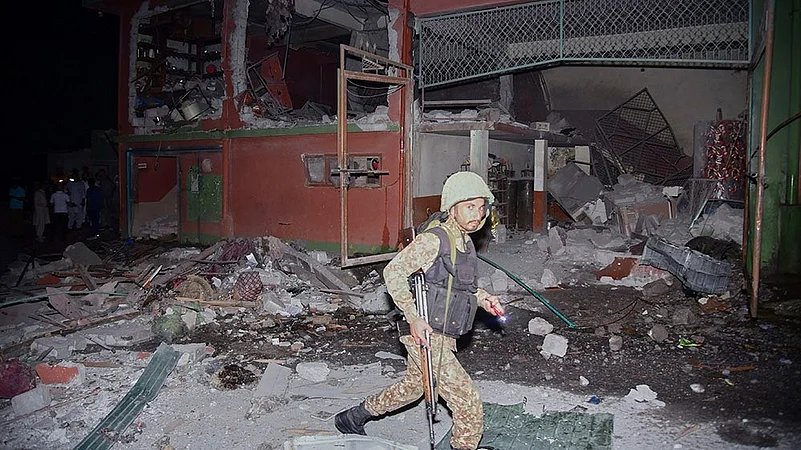On May 7, 2025, India executed a swift and highly precise military operation that marked a turning point in its counterterrorism strategy. Called Operation Sindoor, the strike was not only a direct response to the tragic Pahalgam terror attack but also a calculated show of India’s growing military and geopolitical assertiveness.
In this article, we break down what Operation Sindoor was, why it happened, how it was executed, and what it means for India, Pakistan, and the global community. We also include a section of FAQs to help readers better understand the broader implications of the operation.

What Triggered Operation Sindoor?
To understand the context of Operation Sindoor, we need to go back to April 22, 2025. On that day, terrorists attacked a group of Hindu tourists in Pahalgam, Jammu & Kashmir, killing 26 people in cold blood. The victims were pilgrims visiting a revered temple in the region. The attack was later claimed by The Resistance Front (TRF), a group affiliated with the Pakistan-based Lashkar-e-Taiba.
This act of terror not only shocked the nation but also reignited public demand for strong and immediate action. The Indian government vowed a decisive response, and kept its word just two weeks later.
Read More: Pahalgam Terror Attack: When A Place of Peace Was Pierced By Terror
What Was Operation Sindoor?
Operation Sindoor was a joint military strike by the Indian Army and the Indian Air Force, carried out in the early hours of May 7, 2025. The mission aimed to dismantle terrorist training facilities and camps operating across the Line of Control (LoC) in Pakistan and Pakistan-Occupied Kashmir.
Key highlights of the operation:
- Duration: 25 minutes
- Number of Missiles Fired: 24
- Target Locations: 9 terrorist camps across Bahawalpur, Muzaffarabad, Sialkot, Kotli, and other areas
- Technology Used: Rafale fighter jets, SCALP cruise missiles, and AASM Hammer bombs
- Casualties Reported: Around 70 terrorists killed, including family members of known terror leader Masood Azhar
Importantly, Indian forces did not violate Pakistani airspace, using long-range precision-guided munitions to avoid escalation while maximising tactical impact.

Why the Name “Operation Sindoor”?
The naming of this mission was deeply symbolic. Sindoor is the red vermilion mark traditionally worn by married Hindu women in India, symbolising marital status and sacred commitment. The name was chosen to honour the widows of the men killed in the Pahalgam attack.
By naming the mission “Sindoor,” the Indian government sent a poignant message that the pain of these women, and the loss of their loved ones, would not go unanswered.
A Tactical Evolution in India’s Defence Strategy
Operation Sindoor marks a new chapter in how India responds to terrorism.
Unlike earlier strikes, such as the 2016 surgical strikes post-Uri attack or the 2019 Balakot airstrike ,Operation Sindoor was:
- Technologically advanced with real-time satellite coordination
- Geopolitically measured, avoiding full-blown escalation
- Strategically broader, hitting multiple locations across Pakistan and PoK
This evolution points to India’s growing emphasis on precision warfare, deterrence through capability, and international optics.
How Has the World Reacted?
The global response has been cautious but not critical. Key reactions include:
- Israel voiced support, stating that India’s actions were justified in the context of self-defence.
- United States, United Nations, and European Union urged both nations to exercise restraint while stopping short of condemning India’s actions.
- International media noted the sophistication and speed of the operation, with several outlets highlighting India’s restraint in avoiding civilian infrastructure.
The message was clear: the world is watching, and India knows it.
What Was Pakistan’s Response?
Pakistan called the operation an “act of war” and claimed that several civilians were killed. Islamabad also alleged that it had shot down Indian aircraft, claims that India strongly refuted.
Indian government sources labelled Pakistan’s response a “barrage of lies”, maintaining that all Indian aircraft returned safely and that every missile hit a verified terror target. Satellite imagery and ground intelligence reports supported India’s version of events.
The two nations also saw increased artillery shelling across the LoC in the days following the strike, leading to civilian evacuations on both sides.
What Happens Next?
India has signalled that it does not seek further escalation. According to reports, National Security Advisor Ajit Doval informed international counterparts that while India is ready to defend itself robustly, it will not initiate further action unless provoked.
This balanced approach, strong but restrained, seems designed to prevent wider conflict while establishing a clear precedent for future responses to terrorism.
Operation Sindoor is more than just a military operation. It’s a symbol of India’s evolving defence doctrine, one that prioritises precision, avoids unnecessary escalation, and places humanitarian messaging at its core.
The days of reactive silence are clearly over. In their place stands a nation that is technologically prepared, geopolitically aware, and morally resolved.
Read in short: Operation Sindoor: India’s Precise Strike and the Future of Counter-Terror Strategy
As the world watches the India-Pakistan dynamic evolve, Operation Sindoor will likely be remembered as a watershed moment in how India deals with cross-border terrorism: swiftly, strategically, and with symbolism that cuts deeper than missiles.
Frequently Asked Questions (FAQs)
What is Operation Sindoor?
Operation Sindoor is a military strike conducted by India on May 7, 2025, targeting terror camps in Pakistan and Pakistan-Occupied Kashmir. It was carried out in response to the April 22 terror attack in Pahalgam.
Why did India launch the operation?
The operation was a direct retaliation for the killing of 26 Hindu pilgrims in Pahalgam by terrorists linked to Lashkar-e-Taiba.
Which areas were targeted in the strike?
The operation targeted nine terror camps across areas like Bahawalpur, Sialkot, Muzaffarabad, Kotli, and Bhimber.
What kind of weapons were used in Operation Sindoor?
India used Rafale fighter jets equipped with SCALP cruise missiles and AASM Hammer bombs,high-precision, long-range munitions.
How many terrorists were killed?
Indian sources reported around 70 terrorist casualties, including key operatives and associates of terror leaders.
Did Indian aircraft enter Pakistani airspace?
No. All strikes were executed without crossing into Pakistani territory, maintaining international airspace boundaries.
What is the significance of the operation’s name?
“Operation Sindoor” honours the widows of the victims of the Pahalgam attack, highlighting the human cost of terrorism.
What has been the global reaction?
The international community has urged de-escalation but largely supported India’s right to self-defence.


